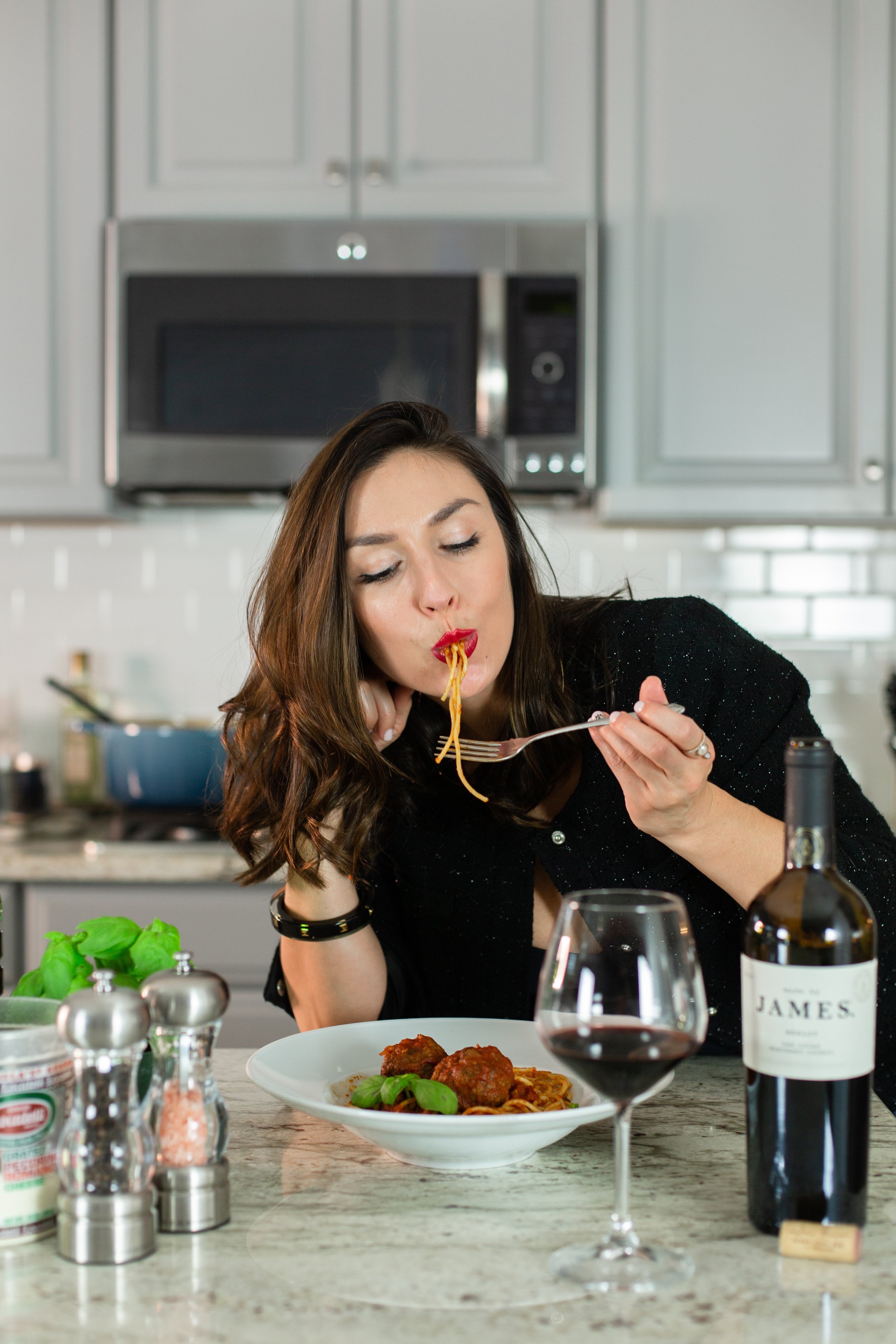Pass The Pen: Melissa Santell
If you’re reading this, we’re likely perfect strangers.
We’ve probably never exchanged glances while picking through the apple bin for the perfect Pink Lady at Whole Foods. You had no idea I’m a fierce 5 '2 tall woman, one second before reading this sentence. And I may never have the pleasure of knowing your first name or what led you here.
In fact, I’m not sure if you’ve ever taken the time to think through this concept… but most of the content we read, see and consume on a daily basis is created by people we’ve never met before. Our world is built on inviting the thoughts of others into our heads and implementing what we learn into our lives.
If you’re thinking, “whew, this chick got philosophical real quick,” I kindly ask you to replay the last Amazon purchase you made in the back of your mind. How many customer reviews did you scour through before buying that tub of Aztec Secret Indian Healing Clay body and face mask?
Case in point.
By the way, I wasn’t looking over your shoulder. That’s just one of the best-selling Amazon products on the market according to the USA Today. Spoiler alert: I bought it, too.
When you think about it, the innate trust we’ve built with one another is pretty freaking cool. And I’m grateful for the opportunity to “meet you” in this moment.
I’m Melissa Santell, a native New Yorker turned Floridian, known to most as the founder of FoodxFeels, a food photographer, cookbook author and marketing consultant in the hospitality space. I’m also the host of a really amazing culinary-themed podcast called Sunday Sauce (inspired by the my not-so-secret family recipe below).
This piece is one that comes from the heart, exploring the relationship between food and memories.
“Take it back to the chef.”
Six words I dreaded every time I ventured to a restaurant with my grandmother as a child.
You see, my Grandma Connie wasn’t your average grandma – she was a spicy Italian woman with a big personality and an affinity for a closet filled with black dresses and Peter Thomas Roth products on standby. She grew up in the Bronx with four siblings and a set of parents who did the best they could in the 1950’s. If you ask anyone who knew her, her life really began the moment she met my grandfather, Ralph, and that’s because it’s when she had her own kids, who later had her grandchildren.
I’m one of four.
On a good day, you’d catch Grandma Connie shaking her crooked pointer finger in the air, swinging her hips to “Ain’t No Mountain High Enough,” illuminated by the glow of the jukebox. On others, you might be a semi-petrified waitress on the receiving end of a filet mignon being paraded back to the kitchen because it was, in fact, NOT medium rare. By this time, two casual goblets of Chivas with a splash of soda on the rocks had usually come and gone. God help us all if there was a sprig of rosemary anywhere on the plate – that was an immediate return to sender, too.
I learned at a really young age that you don’t consume steak at any temperature other than 130°F because if it’s even a little gray, it *must* and will taste like a hockey puck. Unsure of how many humans have actually tasted a hockey puck to truly weigh in on the side-by-side comparison, but as a kid, you tend to believe what you’re told. And I was no different.
On the best days, though, the entire family was strewn across the kitchen with busy hands and Long Island accented words dripping out of our mouths as we cooked. Grandma and my mother were usually distributing roles to the group.
“Put the wha-tah on for caw-fee, will you, Melissar?”
For some reason every word that ended with the letter “a” magically got an “r” added to the end. It was just a New York, Long Island, American Italian thing (and still is). Don’t ask me why.
Food wasn’t just something that brought us together during happy, celebratory life moments, like birthdays and holidays. It was the fabric of how we operated as a family. It was how we said, “I love you” and respectively, when a meal almost didn’t make it on the table it could have a slight “I’m pissed off, but I cooked for you, anyway” connotation.
As ingredients without the capability to speak, food could communicate pretty loudly. And it spoke to me loud and clear at a young age. Perhaps, that’s why I chose to create a career centered around it.
Aside from being the cornerstone of our daily lives, what we eat and the topics we delve into around the table are symbols of deep, intimate connection. And I love that. Food is a language shared by every human being who’s ever had the pleasure of existing on this earth, regardless of where you were born. I love that, too.
It’s our common denominator. Our unspoken way of caring for one another. Our literal life source. At the same time, it can be adventurous and whimsical and surprisingly unpredictable. It shapes our lives in so many unconscious ways.
There’s a reason why you find comfort in wrapping yourself in the cloak of food memories. And it’s not because you're craving a bite of your favorite childhood dessert. It’s because food memories have the power to trigger emotions you experienced at that singular moment. Emotions that are preserved within flavor profiles and smells that can find you, over and over again, throughout the course of your life.
Just. Like. Magic.
It’s the same reason why I’ll always want a spoonful of my mom’s pasta e fagioli soup the moment I start to feel the slightest bit of sickness. And why I’ll never forget the glasses of chocolate milk with crushed ice that my dad used to swirl for me almost every morning as a kid. I would drink it with a few bites of canned tuna and sliced hard, white cheddar cheese while watching Saved by the Bell on the mini TV in our kitchen. Propped up against the quartz counter like a tiny sicko – who eats that concoction together? Six-year-old Melissa Santell.
The kitchen was never just a room in a house for my family, and maybe after reading this you feel the same way, too. Whether we were carefully breading and frying extra thin chicken cutlets or playing Uno at the table after dinner, it was where we always came back to. It was where we felt most at home.
Speaking of home, I’m going to leave you with one last thing. A recipe for something my family and I used to make together, seemingly every weekend: Sunday Sauce. It’s a sacred pot of san marzano tomato sauce studded with homemade meatballs, and best served with a dollop of fresh ricotta cheese and torn basil leaves.
I promise you won’t want to send it back to the chef.
Sunday Sauce
Makes 8 Servings.
Ingredients:
Sauce
1/4 cup olive oil
1 white onion, chopped
1 bunch of fresh basil leaves
2 1/2 teaspoons sea salt
1 teaspoon red pepper flakes
1/2 teaspoon fresh oregano, minced
6-8 garlic cloves, crushed
1 cup red wine, I like to use chianti or pinot noir
3 28-ounce cans of San Marzano whole peeled tomatoes
1 28-ounce can of tomato sauce
1 cup water
Pecorino romano, ricotta + fresh basil, to garnish
Meatballs:
1 pound grass fed ground beef (80% lean/20% fat)
1 pound ground pork
1 1/2 teaspoons parsley
1/2 teaspoon onion powder
1 teaspoon salt
1 teaspoon black pepper
2 cups parmesan cheese, grated
2 eggs
1 1/2 cups bread crumbs
1/2 cup water
Olive oil, for frying
Directions
1. In a large pot, heat olive oil over medium heat. Add onion, basil, salt, red pepper flakes and oregano. Cook onions down until soft, making sure to stir frequently, about 7-9 minutes.
2. Stir in garlic and simmer until fragrant, about 2 minutes. Then pour the wine into the pot and let it simmer until slightly reduced.
3. Use a blender to purée whole peeled tomatoes. Add blended tomatoes and sauce into the pot. Bring to a boil then reduce to low heat.
4. For the meatballs, use your hands to mix all ingredients together in a large bowl. Before rolling the meatballs, dip your fingers in warm water, then roll into two to three-inch balls.
5. In a frying pan, heat 1-2 inches of olive oil over medium heat. When hot, brown meatballs
in batches. Immediately after meatballs are browned, drop them into the sauce. You do not want to cook them all the way through. Before discarding the frying oil, stir 1 tablespoon into the sauce.
6. Reduce the sauce heat to low, and cook for 5–6 hours. Halfway through cooking, add 1 cup of water to the sauce and stir. Taste to adjust seasoning.
7. Serve with your favorite pasta, ricotta cheese, fresh basil leaves and shaved pecorino romano cheese.
8. MANGIA.


